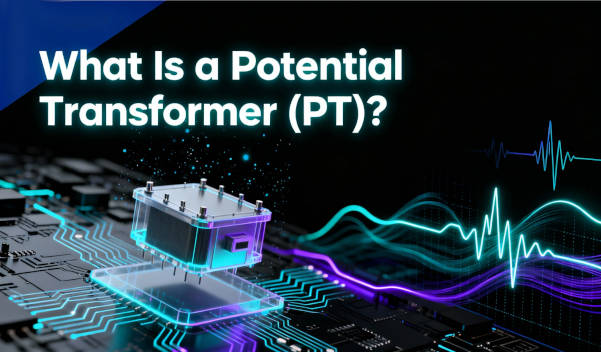Power Management
Power Management refers to the strategies and techniques used to optimize the power consumption of electronic devices, systems, and networks. It is a critical aspect of modern technology, particularly as the demand for energy efficiency and sustainability increases.
Definition:
Power management is the process of controlling and conserving the energy used by electronic devices to ensure they operate within their power supply limits, reduce energy waste, and prolong battery life.
Functions:
1. Energy Conservation: It reduces the overall energy consumption by intelligently managing power states.
2. Battery Life Extension: It optimizes battery usage, especially in portable devices, to extend their operational time.
3. System Stability: It prevents overheating and system crashes by controlling power draw and thermal output.
4. Performance Balancing: It dynamically adjusts power allocation to balance performance and energy efficiency.
5. Adaptive Power Scaling: It adjusts power usage based on the current workload and system requirements.
Applications:
1. Personal Computers: Power management in PCs includes sleep modes, hibernation, and dynamic frequency scaling.
2. Mobile Devices: Smartphones and tablets use power management to optimize battery life and performance.
3. Data Centers: Power management is crucial for server farms to reduce energy costs and carbon footprint.
4. Automotive: Modern vehicles use power management to improve fuel efficiency and electric vehicle range.
5. Smart Grids: Power management is integral to the efficient distribution of electricity in smart grid systems.
Selection Criteria:
1. Efficiency: The system should minimize power consumption without compromising performance.
2. Reliability: It should maintain system stability and prevent power-related failures.
3. Scalability: It should adapt to different power needs and be scalable for future upgrades.
4. User Control: It should offer user-configurable settings for power management preferences.
5. Compatibility: It should work seamlessly with existing hardware and software.
6. Regulatory Compliance: It should meet industry standards and regulatory requirements for energy efficiency.
In summary, power management is essential for maintaining the balance between performance and energy efficiency in various electronic systems. It plays a vital role in reducing energy consumption, extending battery life, and ensuring the longevity and reliability of devices.
Please refer to the product rule book for details.
Definition:
Power management is the process of controlling and conserving the energy used by electronic devices to ensure they operate within their power supply limits, reduce energy waste, and prolong battery life.
Functions:
1. Energy Conservation: It reduces the overall energy consumption by intelligently managing power states.
2. Battery Life Extension: It optimizes battery usage, especially in portable devices, to extend their operational time.
3. System Stability: It prevents overheating and system crashes by controlling power draw and thermal output.
4. Performance Balancing: It dynamically adjusts power allocation to balance performance and energy efficiency.
5. Adaptive Power Scaling: It adjusts power usage based on the current workload and system requirements.
Applications:
1. Personal Computers: Power management in PCs includes sleep modes, hibernation, and dynamic frequency scaling.
2. Mobile Devices: Smartphones and tablets use power management to optimize battery life and performance.
3. Data Centers: Power management is crucial for server farms to reduce energy costs and carbon footprint.
4. Automotive: Modern vehicles use power management to improve fuel efficiency and electric vehicle range.
5. Smart Grids: Power management is integral to the efficient distribution of electricity in smart grid systems.
Selection Criteria:
1. Efficiency: The system should minimize power consumption without compromising performance.
2. Reliability: It should maintain system stability and prevent power-related failures.
3. Scalability: It should adapt to different power needs and be scalable for future upgrades.
4. User Control: It should offer user-configurable settings for power management preferences.
5. Compatibility: It should work seamlessly with existing hardware and software.
6. Regulatory Compliance: It should meet industry standards and regulatory requirements for energy efficiency.
In summary, power management is essential for maintaining the balance between performance and energy efficiency in various electronic systems. It plays a vital role in reducing energy consumption, extending battery life, and ensuring the longevity and reliability of devices.
Please refer to the product rule book for details.
Categories
Datasheets
Article

Comparing Gate Drivers: High-Side vs Low-Side Applications Explained
In the ever-evolving world of electronics, gate and power drivers play a pivotal role in controlling the operation of power semiconductor devices. As demand for efficient power management continues to grow across various industries, understanding the nuances between high-side and low-side gate drivers is essential. This article provides an in-depth comparison of these two types of gate drivers, their applications, and their fu...
Learn More >

What Is a Potential Transformer (PT)?
Table of Contents + 1. Basic Definition & Background 1.1. What Is a Potential Transformer? 1.2. PT vs Ordinary Transformer vs Instrument Transformer 1.3. Applications of Potential Transformers / What Are Potential Transformers Used For?2. Operation Principle 2.1. Working Principle of a PT / VT 2.2. Voltage Ratio & Turn Ratio Relationship 2.3....
Learn More >
ICkey Named Intel IoT Solution Aggregator, Marking Strategic Milestone in Partnership
ICkey, a leading distributor of electronic components and provider of digital supply chain solutions, has entered into a strategic partnership with global semiconductor giant Intel, becoming an official Intel IoT Solution Aggregator. To commemorate this milestone, the two companies held a signing ceremony under the theme “Smart Connectivity, Powering the Future.” During the ceremony, Bi Fenglei, Senior ...
Learn More >











_1755241641600.jpg)


















